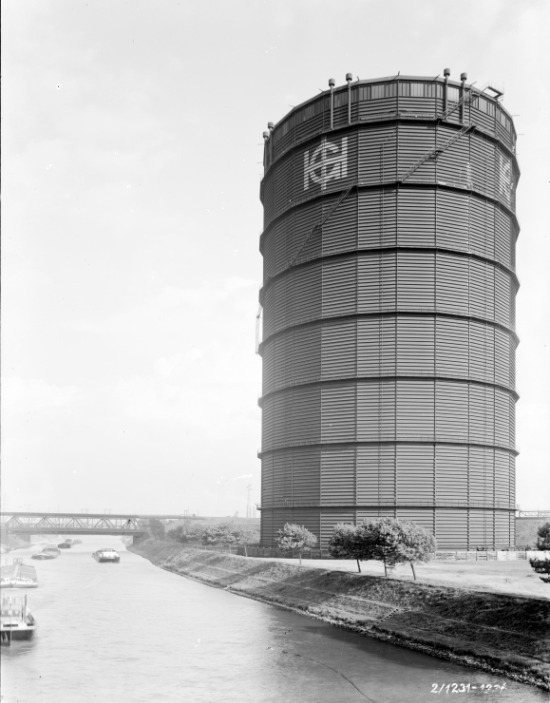Technology

The Gasometer in Oberhausen is, strictly speaking, a disc-type gas holder. It functions according to a principle which was developed by MAN Gustavsburg near Mainz in 1915: - the gas which was to be stored was injected at the bottom into the interior chamber and taken out again at a different point. The 24-sided ground plan is formed by 24 double-T girders, between which 8.80 metre-long, 0.81 metre-high and only 5 millimetre-thick shell plates were riveted. They enclosed the Gasometer gas-tight and ensure its horizontal stability.
On the gas, the gas-pressure disc floated which, depending on the quantity stored, glided up and down the oil-lubricated walls. If the Gasometer was completely filled, the disc was at a height of 95 metres. This maximum filling height is today still easily recognised in the upper area of the Gasometer. Because the dead weight of the disc was, however, not sufficient to adequately compress the gas and reach the necessary gas pressure of 300 millimetres water column, additional concrete weights were placed on the disc. The total weight of the disc thus rose from 600 tonnes to 1207 tonnes.
Today the gas-pressure disc is stationary and most of the concrete weights have been removed. But already at the time it was in operation the disc could be walked on because the gas was enclosed air-tight under the disc. Impermeability at the edge of the disc was achieved by means of an oil/tar mixture which permanently ran along the walls of the Gasometer. It was collected at the bottom, cleaned to remove dirt and condensation and pumped up again on the outside.

